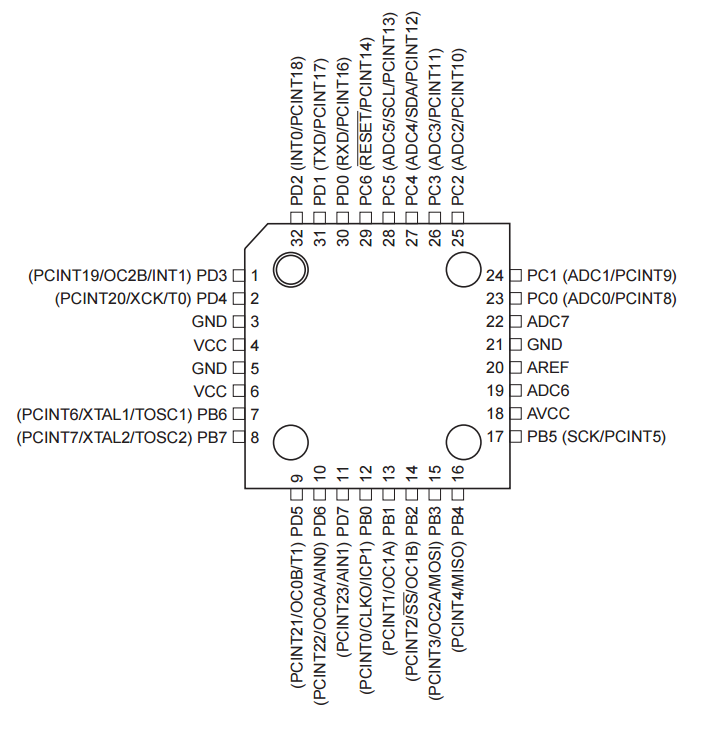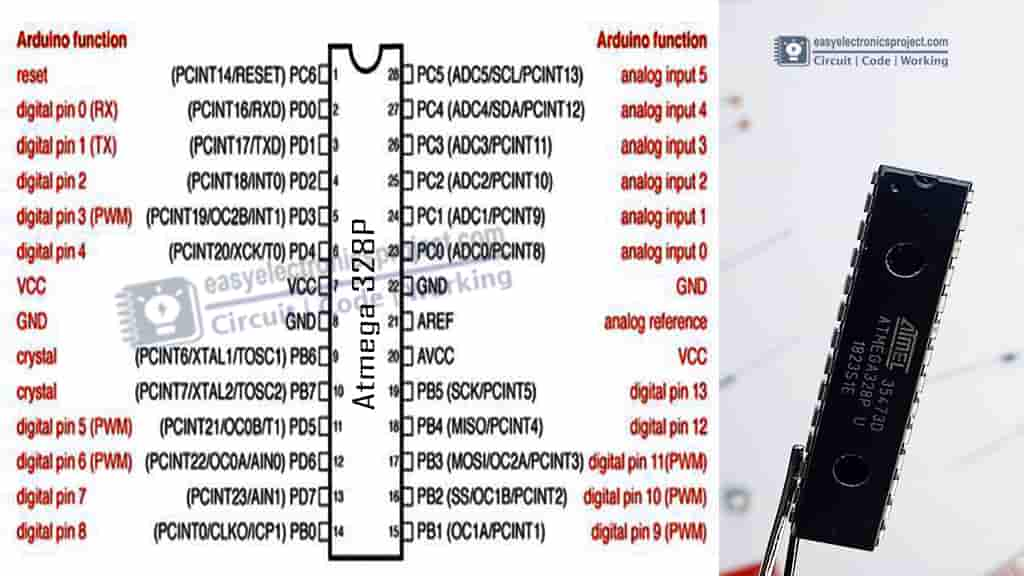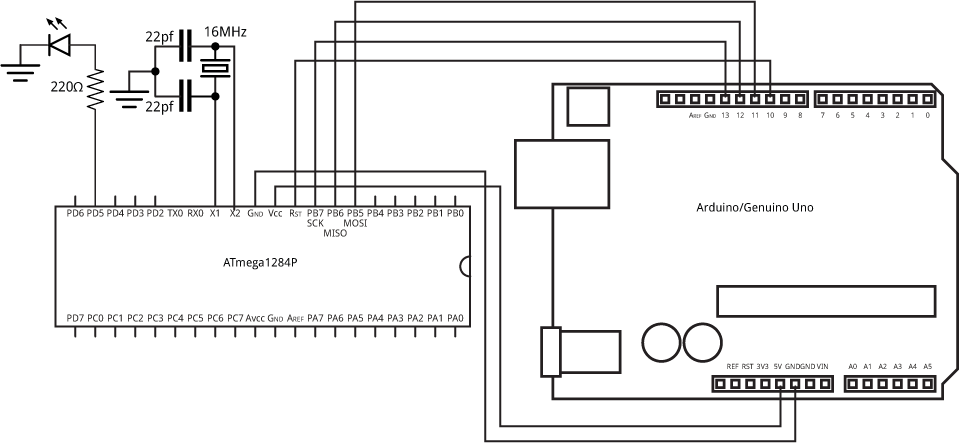
It gives the Arduino IDE the communication path needed to flash the microcontroller with the written Arduino code.
#Atmega328p serial
USB to serial adapters are generally used to connect a serial device to the computer via USB ports. To program the Arduino on breadboard and flash it with your own code, we will need to connect the USB to Serial Converter module to the Arduino on breadboard.
#Atmega328p code
The flashing of the LED that we saw from the last section after the setup was powered was due to the blink led code that comes with the Arduino bootloader.

Once the component setup is done, the next thing is programming the arduino on breadboard to run our desired code/firmware.

It should be noted that the maximum voltage which should be applied to the VCC pin of the atmeg328p microcontroller is 6v and this should be avoided, as the advisable working voltage is between 3.3V and 5.5V. With the circuit and power connected, you should see the led start blinking. Numbering of the microcontroller’s pin should start from there to prevent connecting the components wrongly. While plugging the microcontroller to the breadboard, take note of the notch at the top left which signifies the first pin (RST) of the microcontroller.
#Atmega328p zip file
This sticker is included in the zip file attached at the end of this tutorial and can be used to make the connections easy for you. To make it easy to connect the components to the microcontroller, A sticker which translates the pins of the microcontroller to the equivalent pin on the Arduino is pasted on top of the microcontroller. SchematicsĬonnect the components of the Arduino on breadboard as shown in the schematic below. While buying the atmega328p, its important to ensure that the one being bought, has the Arduino bootloader on it as this procedure will not work for the atmega chip without the Arduino bootloader. The following components will be needed to build this project
#Atmega328p pro
The second benefit is the low power consumption of this project, compared to all other types of Arduino including the pro mini, this consumes far less amount of power in standby mode.Working with the Atmega328p on a breadboard will give a deeper understanding of how the Arduino hardware works.Some benefits of the Arduino on Breadboard are listed below with the most important one for me being the second one as optimizing power for devices is very important in design. This project is very easy and shouldn’t take a lot of time to implement, but before we proceed to the tutorial, its important to explore some of the benefits and reasons for this project, especially when we could get a cheap “alternative” in the Arduino pro mini for less than $2, if size was the only benefit. This is not the case with the ordinary atmeg328p microcontroller system as the microcontroller can’t be programmed using the Arduino IDE. In the End i would say yes it's possible, but you have to make sure not to short out Pins 3&6, you're not using the wrong crystal and you might need to adjust the timing for programming parallel slightly.While they look similar, the difference between the ordinary atmeg328p microcontroller based circuit and the arduino on breadboard is the fact that, the microcontroller used for the Arduino on breadboard always carries the arduino bootloader which allows it to be programmed using the arduino IDE.

This could however be done through the signature bytes which were also adjusted, so a programmer could automaticly adjust the timings if it is aware of this change. If you want to stay in spec you're probably going to need to adjust the timings for writing to the chip. Paragraph 3.3 states the timing differences for the parallel programming: The timings were slightly adjusted and they don't overlap.
#Atmega328p full
Also it can't handle a full swing crystal oscillator anymore. We can see that several peripherals were added and therefor configuration registers added and that in the tqfp packages pin 3 & 6 are not power and gnd anymore. The best way to answer this kind of question would be to check and compare the Datasheets or search for an application node like this on from the manufacturer where the differences are listed.


 0 kommentar(er)
0 kommentar(er)
